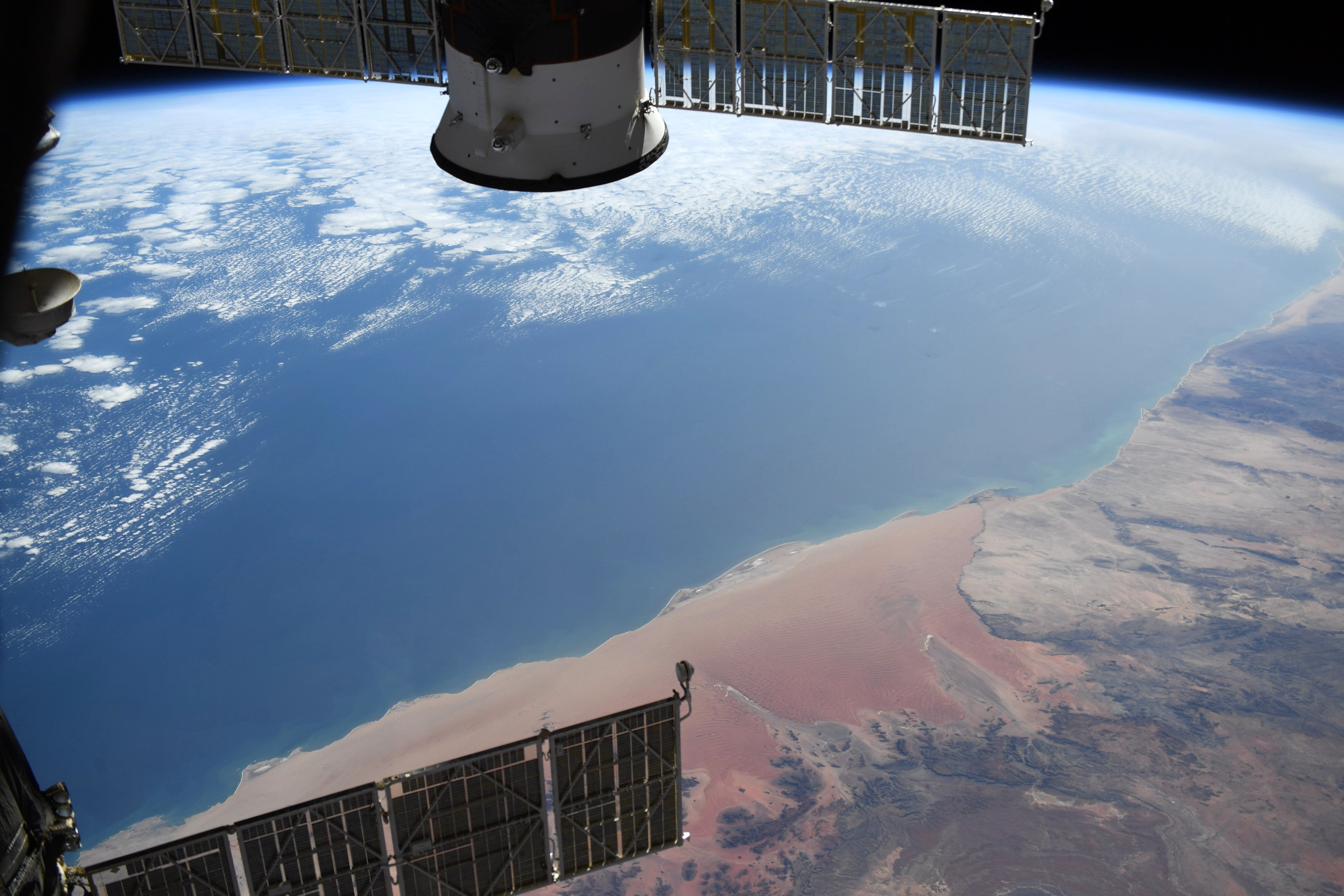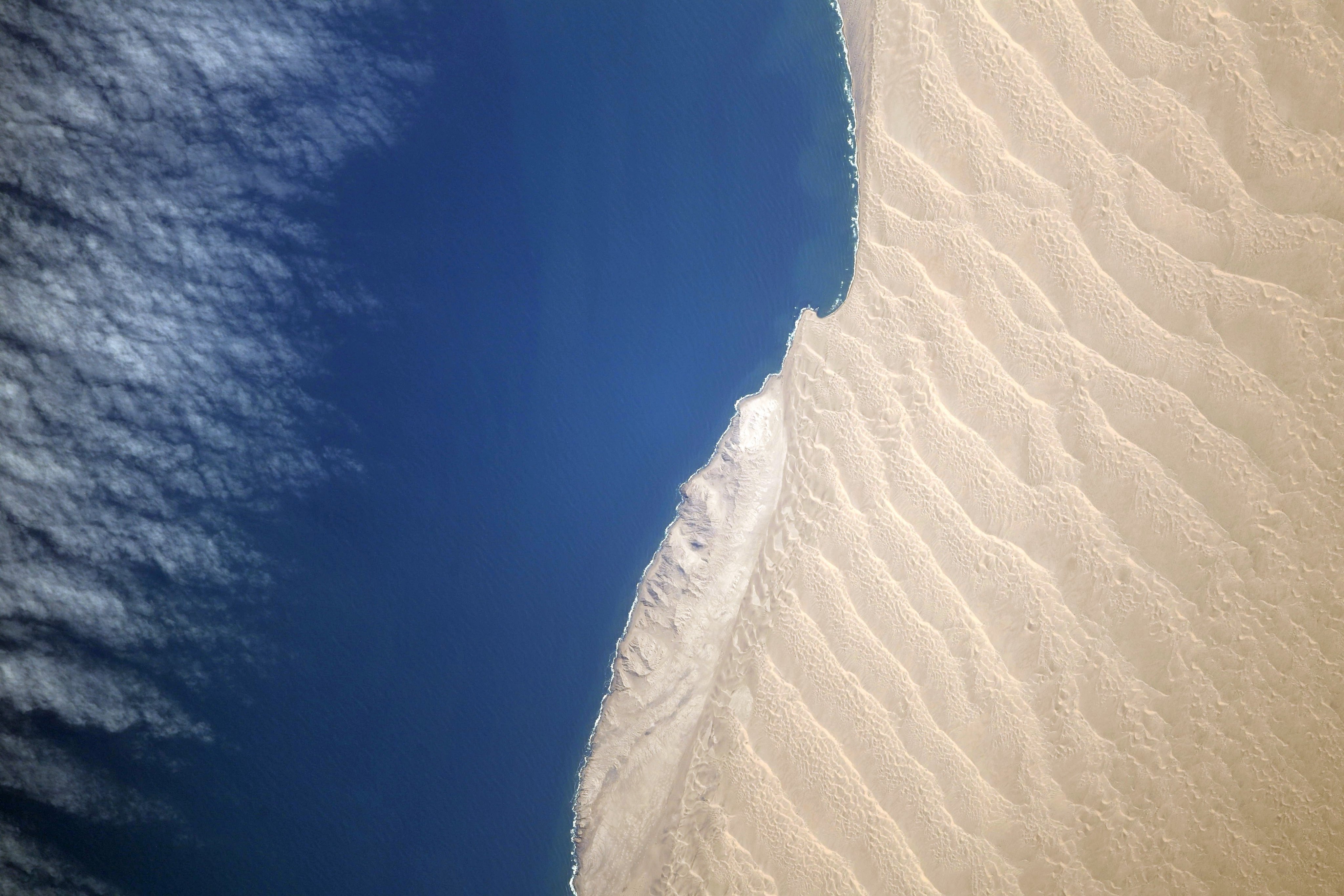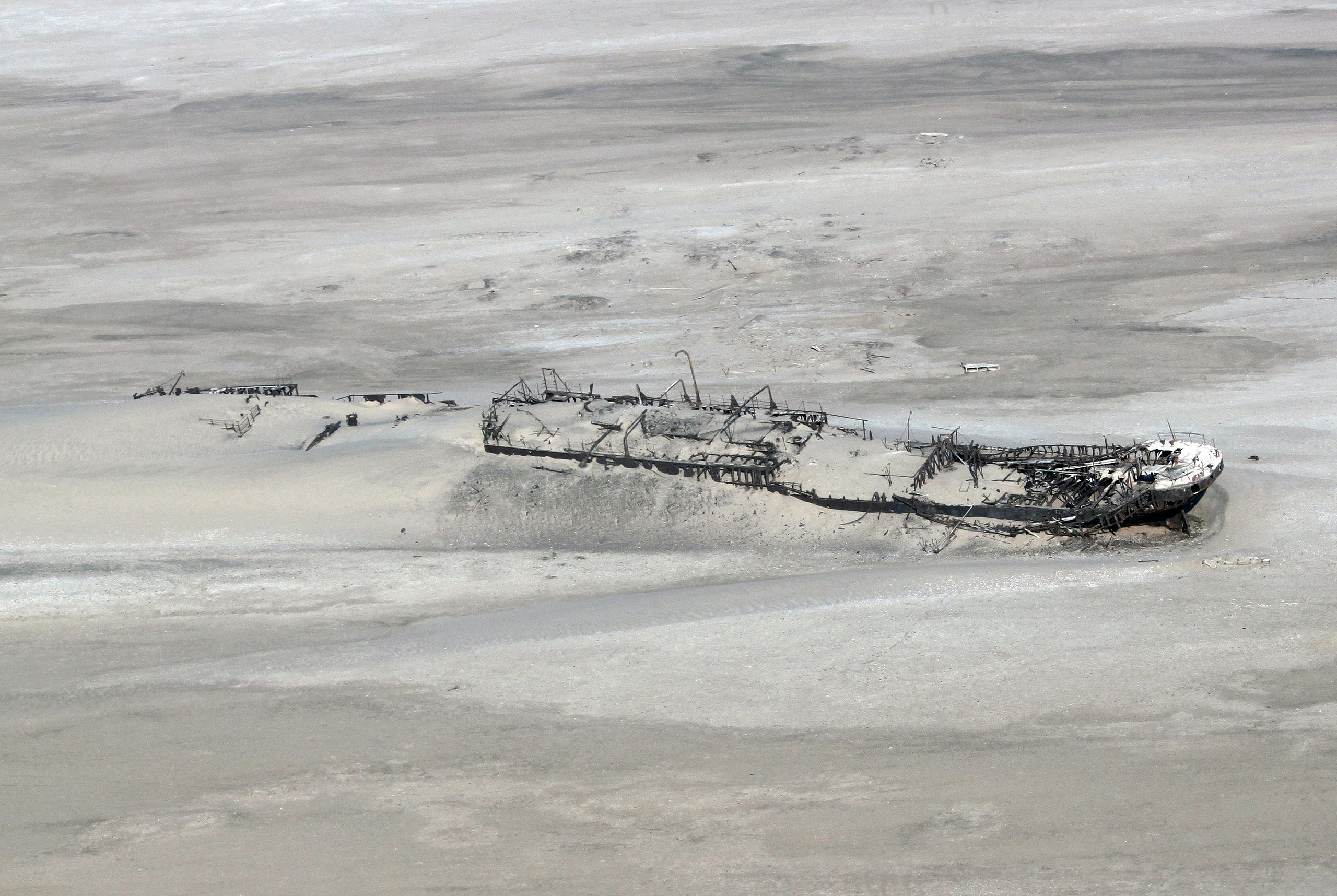[:ja]クリスティーナ・コッシュ宇宙飛行士がISSから撮影したナミビア、ナミブ砂漠のスケルトン・コーストでです。


ナミブ砂漠は、ナミビア大西洋側に位置する砂漠で、北はアンゴラとの国境付近から南は南アフリカ共和国北端にまで南北1,288kmにおよびます。約8000万年前に生まれた世界で最も古い砂漠と考えられており、「ナミブ」は主要民族であるサン人の言葉で、「何もない」という意味です。大西洋を北上する寒流・ベンゲラ海流の影響で生じた典型的な西岸砂漠ですが、鉄分が付着し酸化するため、酸化鉄の色によって砂は白から赤く変色します。沿岸の海上はかなりの暴風が吹き荒れており、海岸には沖合で濃霧のため難破した船舶や鯨などが打ち上げられスケルトンコースト(骸骨海岸)と呼ばれています。
地上の様子はこちらです。

参考文献: Christina Koch’s Tweet
地球俯瞰画像を見る: LiVEARTH
[Earthview Wonders] No.907: Skeleton Coast, Namibia🇳🇦
Astronaut Christina Koch captured from ISS Skeleton Coast of Namib Desert, Namibia..


The Namib is a coastal desert, the name of which is of Nama origin and means “vast place”. The Namib stretches for more than 2,000km along the Atlantic coasts of Angola, Namibia, and South Africa. Having endured arid or semi-arid conditions for roughly 55–80 million years, the Namib is considered the oldest desert in the world. Coastal regions can experience more than 180 days of thick fog a year. While this has proved a major hazard to ships – more than a thousand wrecks litter the Skeleton Coast – it is a vital source of moisture for desert life. Near the coast, the cold ocean water is rich in fishery resources and supports populations of brown fur seals and shorebirds, which serve as prey for the Skeleton Coast’s lions.
The local scenery on the ground is as follows.

Reference: Christina Koch’s Tweet
See earthview photo gallery: LiVEARTH[:en][Earthview Wonders] No.907: Skeleton Coast, Namibia🇳🇦
Astronaut Christina Koch captured from ISS Skeleton Coast of Namib Desert, Namibia..


The Namib is a coastal desert, the name of which is of Nama origin and means “vast place”. The Namib stretches for more than 2,000km along the Atlantic coasts of Angola, Namibia, and South Africa. Having endured arid or semi-arid conditions for roughly 55–80 million years, the Namib is considered the oldest desert in the world. Coastal regions can experience more than 180 days of thick fog a year. While this has proved a major hazard to ships – more than a thousand wrecks litter the Skeleton Coast – it is a vital source of moisture for desert life. Near the coast, the cold ocean water is rich in fishery resources and supports populations of brown fur seals and shorebirds, which serve as prey for the Skeleton Coast’s lions.
The local scenery on the ground is as follows.

Reference: Christina Koch’s Tweet
See earthview photo gallery: LiVEARTH[:]